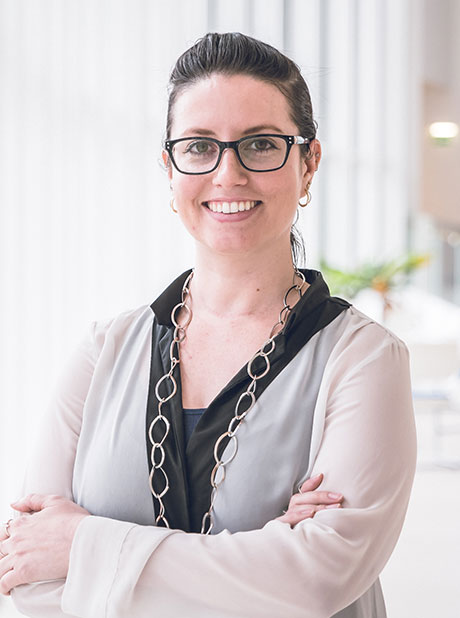

- Home
- About Us
-
Employment
- Technical Work
- USSP
- Reference Documents
-
Travel
Meet the People of IAEA Safeguards
The International Atomic Energy Agency has a world-class, diverse and multi-disciplinary workforce. With more than 2,500 staff working in a wide range of nuclear and related disciplines, it draws on their expertise to ensure the peaceful use of nuclear material and application of nuclear techniques for sustainable development. Here's a profile of one the safeguards professionals hired through the the International Safeguards Project Office.
Interview with Sarah Laderman
How did you end up at the IAEA? What were you doing before you joined the IAEA?
Right after undergrad, I was working as a defense contractor on nuclear modernization policy and weapons effects. I then went back to grad school at the University of California, Berkeley. Here, I shifted my focus more toward nonproliferation policy and treaty verification. This shift led me to an internship at Lawrence Livermore National Laboratory, where I learned more about safeguards and continued to research defense policy.
How did you learn about your current position?
I learned about the Junior Professional Officer program through Lawrence Livermore National Lab's safeguards lecture series (even though I was interning for the Center for Global Security Research). I found out about my specific position as an open-source information analyst by signing up for job opening alerts during my last year in grad school.
What have you learned about yourself while working at this capacity?
I've learned that I can sometimes get caught up in the details, but it's much more important to keep your eye on the big picture. One report will likely not have much of an impact on a State's safeguards; however, noticing patterns and piecing together disparate information could have a very important impact.
How will working at the IAEA enhance your career?
The IAEA is a prestigious place to work and has allowed me to make a variety of contacts who I wouldn't have been able to otherwise. Additionally, I now have experience working in an international environment and am able to reach across many organizations, cultures, and languages in order to complete projects.
What is your favorite thing about your current work at the IAEA?
My favorite thing about my work is the fact that I get to learn about a variety of topics. I don't feel like I'm pigeon-holed into one specific topic or region. Instead, I get to work on States from across the globe with varying levels of fuel cycle activity and experience.
What is it like living and working in Vienna?
I've previously lived in San Diego, Boston, Washington, DC, and Berkeley, but Vienna is by far my favorite place to live and work. Public transportation is unbelievable, the cost of living is cheaper, and the city is centrally located for easy travel. After only a year of being here, I've already been to Hungary, Italy, Germany, Estonia, Monaco, France, Spain, Finland, Poland, Switzerland, Belgium, the Netherlands, the Czech Republic, and the United Kingdom—not to mention my extensive travelling around Austria itself. Living in Vienna is truly the opportunity of a lifetime.
What advice would you give to those who are seeking employment at the IAEA?
Be yourself! In my opinion, the IAEA isn't really looking for any one “type” of candidate. Rather, they are looking for different backgrounds and experiences to help solve problems from a number of different angles. If you're prepared for the interview and can bring your personality, expertise, and unique point of view, you'll do great!

Sarah Laderman
Junior Professional Officer
Associate Safeguards Information Officer (Open Source)
Division of Information Management


